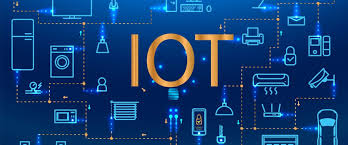Getting started with IoT implementation can be a gradual process that involves careful planning and consideration of various aspects. Here are some steps individuals and businesses can follow to begin their IoT journey:
- Define Goals and Use Cases: Start by identifying the goals and objectives you want to achieve through IoT implementation. Determine the specific use cases or problems you want to address with IoT technology. It could be improving operational efficiency, enhancing customer experiences, optimizing resource utilization, or enabling new services.
- Conduct a Feasibility Study: Evaluate the feasibility and viability of your IoT implementation by assessing factors such as technical requirements, infrastructure readiness, budget considerations, and potential return on investment. Understand the capabilities and limitations of your existing systems, and identify any gaps that need to be addressed.
- Identify IoT Devices and Sensors: Determine the types of IoT devices and sensors that align with your use cases and goals. Research available devices and evaluate their features, compatibility, reliability, security, and scalability. Consider factors such as power requirements, connectivity options, data collection capabilities, and integration capabilities with existing systems.
- Select Communication and Connectivity Technologies: Choose the communication and connectivity technologies that best suit your IoT implementation. Consider factors such as range, data rate, power consumption, network infrastructure availability, and security requirements. Options include Wi-Fi, Bluetooth, cellular networks, Zigbee, LoRaWAN, or a combination of these technologies.
- Establish Data Management and Storage: Plan how you will manage and store the data generated by IoT devices. Determine whether you will utilize edge computing for local data processing or rely on cloud platforms for data storage, processing, and analytics. Consider data security, scalability, and compliance with data protection regulations.
- Develop or Adopt IoT Applications: Determine whether you need to develop custom IoT applications or if existing applications can meet your requirements. Determine the functionality, user interfaces, and integration capabilities needed for effective device management, data visualization, and control. Consider factors such as scalability, security, and compatibility with your chosen IoT devices and platforms.
- Ensure Security and Privacy: Prioritize security and privacy in your IoT implementation. Implement robust security measures such as device authentication, encryption, access controls, and secure communication protocols. Consider privacy regulations and ensure that personal or sensitive data is handled securely and in compliance with applicable laws.
- Pilot Testing and Iterative Deployment: Start with small-scale pilot testing to validate your IoT implementation before full deployment. Test the functionality, performance, and interoperability of your IoT devices, connectivity, and applications. Gather feedback, make improvements, and iterate on your implementation based on the pilot results.
- Scalability and Integration: Plan for scalability as you expand your IoT implementation. Consider how your IoT system will integrate with existing IT infrastructure, enterprise systems, and workflows. Ensure that your IoT implementation aligns with your long-term goals and allows for future expansion and integration with new technologies.
- Continuous Monitoring and Optimization: Once your IoT implementation is deployed, establish mechanisms for monitoring and optimizing its performance. Monitor device health, data quality, network connectivity, and system performance. Gather insights from data analytics and user feedback to identify areas for improvement and make necessary adjustments.
Remember that IoT implementation is an ongoing process that requires continuous evaluation, adaptation, and improvement. It is essential to stay updated with emerging technologies, security practices, and industry standards to maximize the benefits of your IoT implementation. Consider involving IoT experts, consultants, or vendors with experience in IoT deployments to guide you through the process.
SHARE
